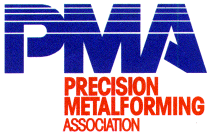What is passivation of stainless steel?
Microsheen also features passivating of stainless steel parts. Passivation is a widely-used metal finishing process to prevent corrosion. In stainless steel, the passivation process uses nitric acid or citric acid to remove contaminants from the surface. This chemical treatment removes all ferrous metal and microscopic surface impurities such as airborne iron, steel or dust particles from stainless surfaces.
These impurities may cause corrosion and, in many cases, contamination of your finished product as the part/equipment is used. The passivating process leads to a protective oxide layer that is less likely to chemically react with air and cause corrosion.
Benefits of passivating stainless steel
Passivation is a post-fabrication best practice for newly-machined stainless steel parts and components. Benefits include:
- Chemical film barrier against rust
- Extended life of the product
- Removal of contamination from product surface
- Reduced need for maintenance.
A more thorough description of passivation is the regeneration of the passive film that protects stainless steel. This film will form spontaneously over time after the part leaves the pickling tank, however the passivating process aims to accelerate this action so that it occurs before the part leaves the passivating tank. Most passivating solutions are based on nitric acid, which is highly oxidizing and instantly restores the passive layer.
Microsheen capabilities are for small batch passivating, priced either by the piece or by the pound.


